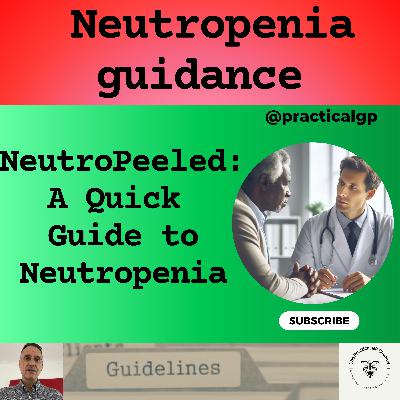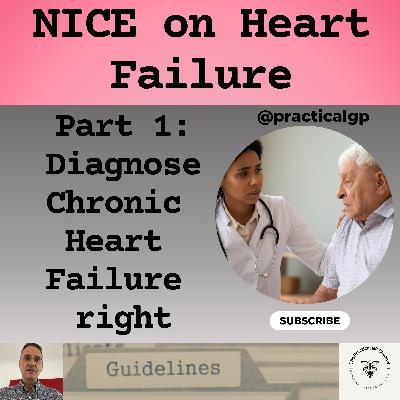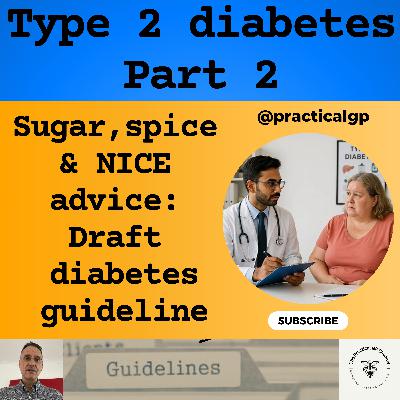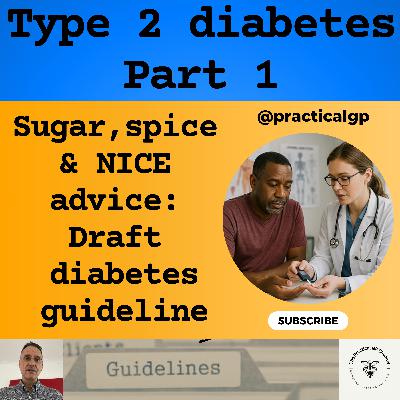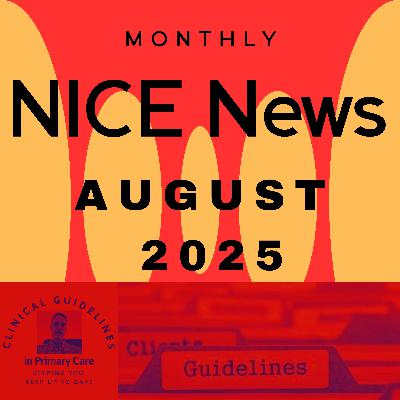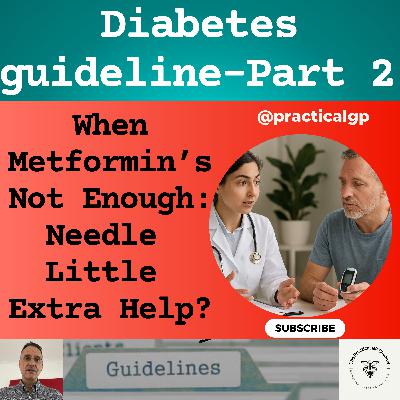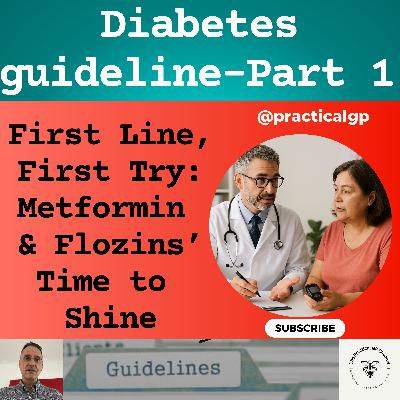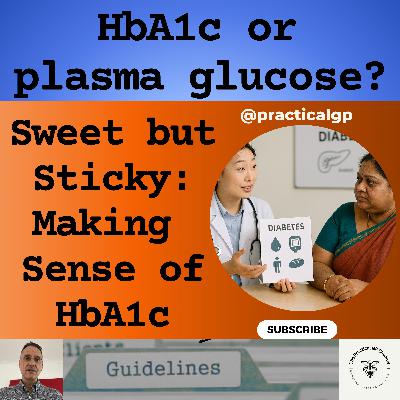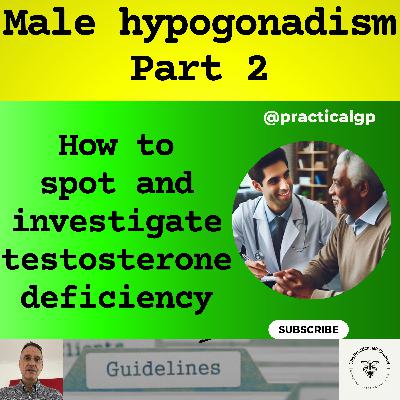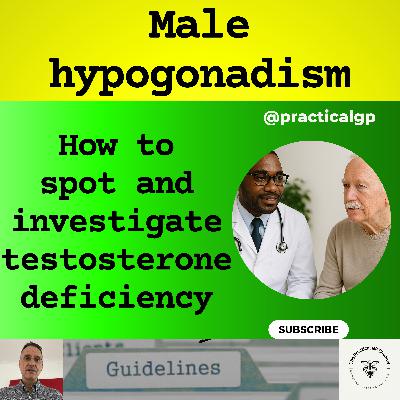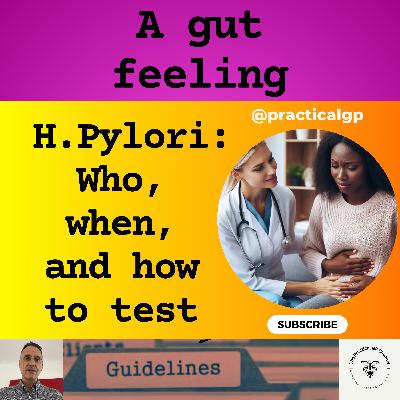Podcast - A real pain in the head: Cluster Headache explained
Description
The video version of this podcast can be found here:
· https://youtu.be/GelDVWruIlA
The link to the video on updated migraine management can be found here:
· https://youtu.be/LumBxN-yFmI
This episode makes reference to guidelines produced by the "National Institute for Health and Care Excellence" in the UK, also referred to as "NICE". The content on this channel reflects my professional interpretation/summary of the guidance and I am in no way affiliated with, employed by or funded/sponsored by NICE.
NICE stands for "National Institute for Health and Care Excellence" and is an independent organization within the UK healthcare system that produces evidence-based guidelines and recommendations to help healthcare professionals deliver the best possible care to patients, particularly within the NHS (National Health Service) by assessing new health technologies and treatments and determining their cost-effectiveness; essentially guiding best practices for patient care across the country.
My name is Fernando Florido and I am a General Practitioner in the United Kingdom. In this episode I go through the updated NICE recommendations on the diagnosis and management of cluster headaches, focusing on those that are relevant to Primary Care only. It is based on the clinical guideline on headaches in over 12s: diagnosis and management [CG150].
I am not giving medical advice; this video is intended for health care professionals, it is only my summary and my interpretation of the guidelines and you must use your clinical judgement.
Disclaimer:
The Video Content on this channel is for educational purposes and not intended to be a substitute for professional medical advice, diagnosis, or treatment. Always seek the advice of your physician or other qualified health provider with any questions you may have regarding a medical condition. Never disregard professional medical advice or delay in seeking it because of something you have read or seen on this YouTube channel. The statements made throughout this video are not to be used or relied on to diagnose, treat, cure or prevent health conditions.
In addition, transmission of this Content is not intended to create, and receipt by you does not constitute, a physician-patient relationship with Dr Fernando Florido, his employees, agents, independent contractors, or anyone acting on behalf of Dr Fernando Florido.
Intro / outro music: Track: Halfway Through — Broke In Summer [Audio Library Release]
- Music provided by Audio Library Plus
- Watch: https://youtu.be/aBGk6aJM3IU
- Free Download / Stream: https://alplus.io/halfway-through
There is a podcast version of this and other videos that you can access here:
Primary Care guidelines podcast:
· Redcircle: https://redcircle.com/shows/primary-care-guidelines
· Spotify: https://open.spotify.com/show/5BmqS0Ol16oQ7Kr1WYzupK
· Apple podcasts: https://podcasts.apple.com/gb/podcast/primary-care-guidelines/id1608821148
There is a YouTube version of this and other videos that you can access here:
- The Practical GP YouTube Channel:
https://youtube.com/@practicalgp?si=ecJGF5QCuMLQ6hrk
The updated clinical guideline Headaches in over 12s: diagnosis and management [CG150] can be found here:
· https://www.nice.org.uk/guidance/cg150
The MHRA advice on the use of topiramate can be found here:
The NICE recommendations organised by site of cancer on the guideline Suspected cancer: recognition and referral can be found here:
Transcript
If you are listening to this podcast on YouTube, for a better experience, switch to the video version. The link is in the top right corner of the video and in the episode description.
Hello and welcome! I’m Fernando, a GP in the UK. In today’s episode, we’ll I go through the updated NICE recommendations on the diagnosis and management of cluster headache, focusing on what is relevant in Primary Care only. It is based on the NICE guideline on headaches or CG150 and the link to it is in the episode description.
Right, let’s jump into it.
Cluster headaches are a primary headache disorder. Let’s remember that we classify headache disorders as either primary or secondary. The cause of primary headaches isn’t well understood, so we group them by clinical pattern. The most common primary headache disorders are tension-type headache, migraine, and cluster headache.
By the way, if you are interested in the updated management of migraines, check the corresponding episode on this channel. The link to it is in the episode description.
Secondary headaches are due to underlying disorders including medication overuse headache, giant cell arteritis, raised intracranial pressure, and infection.
Headaches are very common and there’s often concern about possible underlying causes from both patients and healthcare professionals.
So, firstly, let’s look at when we need to consider further investigations or referral.
The NICE cancer guideline says that we should suspect a brain or a central nervous system malignancy in
· adults if there is progressive, sub‑acute loss of central neurological function. We will refer them urgently for direct access, MRI scan of the brain to be done within 2 weeks. Alternatively, we can refer for a CT scan if MRI is contraindicated
· In children and young people with newly abnormal central neurological function, we will arrange instead a very urgent specialist referral, that is, an appointment within 48 hours.
There are some headache features that should also instigate further investigations or referral. The list is long and it includes symptoms such as:
- worsening headache with fever
- sudden‑onset headache reaching maximum intensity within 5 minutes
- new‑onset neurological or cognitive dysfunction
- head trauma within the past 3 months
- headache triggered by cough, sneeze or exercise or an
- orthostatic headache, that is, a headache that changes with posture
Additionally, we will consider further investigations or referral for people who present with new‑onset headache and:
- compromised immunity,
- a history of malignancy or
- vomiting without other obvious cause.
Once secondary causes of headaches have been excluded, then we’ll know that we are dealing with a primary headache. But, how do we differentiate cluster headache from other primary headaches such as migraine or tension-type headache?
Well, we will diagnose it according to the headache clinical features. So, let’s have a look at these features, and compare them with what we would expect in migraine and tension-type headache.
Let’s look at the pain location first. In cluster headache the pain location is unilateral, usually around the eye, above the eye and along the side of the head or face. In migraine it can be unilateral or bilateral and in tension-type headache it is usually bilateral.
The pain quality in cluster headache is variable. It can be sharp, boring, burning, throbbing or tightening. In migraine the pain is usually pulsating, although in young people it can also be throbbing or banging and in tension-type headache it is pressing or tightening and generally non‑pulsating.
The pain intensity in cluster headache is severe or very severe whereas in migraine it is moderate or severe and in tension-type headache it is mild or moderate.
When it comes to the effect on activities, there is restlessness or agitation in cluster headache. In migraine it is aggravated by, or causes avoidance of, routine daily activities whereas tension type headache is not normally aggravated by routine activities.
And finally, the duration of cluster headache is usually 15 minutes to 3 hours whereas in migraine it is usually 4 to 72 hours in adults, but sometimes shorter, from about 1 hour in young people. In tension-type headache it is usually anything from 30 minutes to continuous.
Cluster headache also usually presents with associated symptoms and we can consider them to help with the diagnosis.
For example, in cluster headache, on the same side as the headache we can find:
- a red or watery eye
- a swollen and or drooping eyelid
- a constricted pupil
- nasal congestion or a runny nose
- and forehead and facial sweating
On the ot



